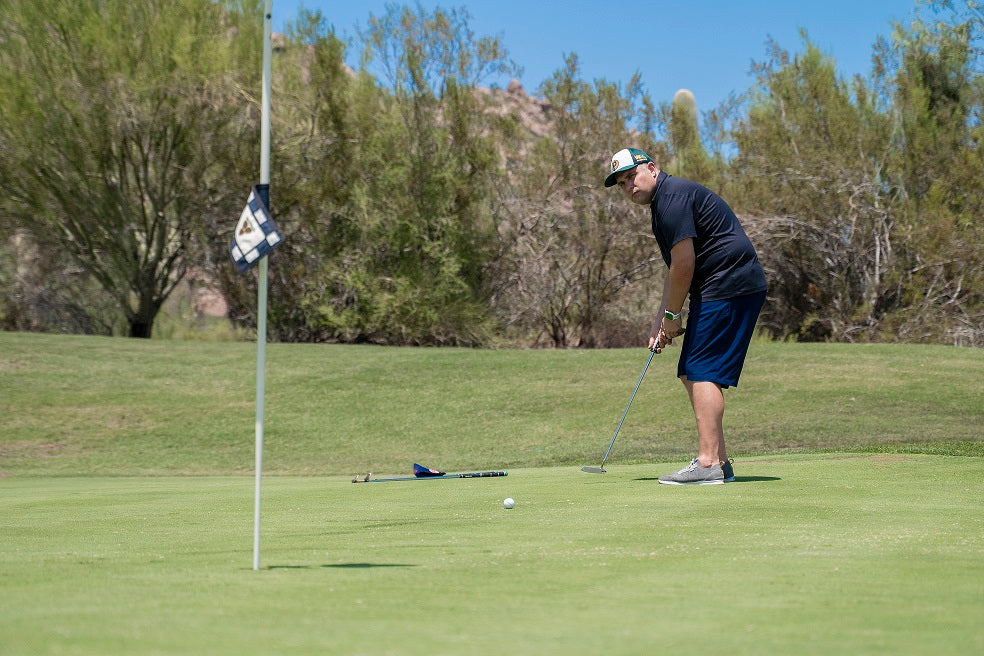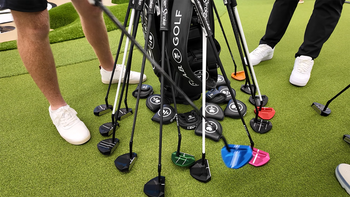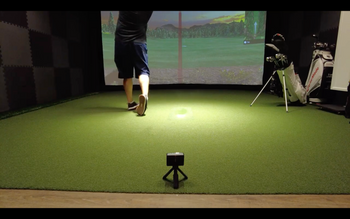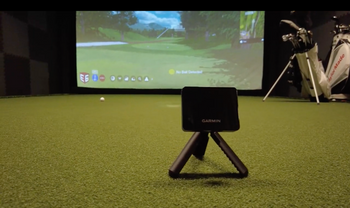Ever wondered why your playing partners seem to outdrive you every time? Let's talk about knowing your real yardages - it's gonna change how you attack every hole.
Here's the deal: nailing down how far you hit each stick in your bag is like having a secret weapon. You'll make smarter choices and stop leaving yourself those impossible 40-yard half-wedges that nobody likes.
Golf's this crazy mix of skill and numbers that'll drive you nuts one day and keep you coming back the next. But here's what most weekend warriors miss - it's not about swinging harder, it's about knowing your actual distances cold.
Check this out: your typical guy at the local muni is launching drives around 217 yards according to the USGA folks who track this stuff. Meanwhile, those tour pros you watch on Sunday? They're bombing it nearly 294 yards on average as of 2019. That's a massive gap, but don't let it mess with your head.
Every player's got their own distance reality. Sure, the scratch golfers and tour players are gonna smoke their irons way past yours. That's just physics and practice talking.
We're gonna break down what you should realistically expect from your bag, help you figure out if you're hitting it decent or need some work, and show you what actually makes the ball go farther (spoiler: it's not always what you think).
Typical Distances for Every Golf Club
You know how your buddy claims he hits his driver 250 yards, but you've never seen it go past 200? Yeah, we've all been there. The truth is, how far you'll actually hit each club depends on a bunch of stuff – your swing speed, how solid your contact is, your fitness level, and whether you're playing in Denver or down at sea level.
Let me break down what most guys are really hitting on the course. Your driver? You're probably looking at somewhere between 200 and 230 yards when you catch it flush. Not the 300-yard bombs you see on TV, but hey, that's reality for us weekend warriors.
Your fairway woods are gonna be your go-to clubs when you need some distance but can't risk pulling the driver. That 3-wood should fly about 180 to 210 yards, while your 5-wood lands in the 170 to 200 range. Got a 7-wood in the bag? Perfect for those 160 to 190-yard shots when you need height and forgiveness.
Here's where it gets interesting – hybrids versus long irons. Your 3-hybrid and 3-iron both cover that 163 to 190-yard window, but let's be honest, that hybrid is way easier to hit. Moving down the set, your 4-iron flies 150 to 180, your 5-iron goes 140 to 170, and that trusty 6-iron covers 130 to 160 yards.
The scoring clubs are where you'll see the biggest improvement with practice. Your 7-iron should carry 120 to 150 yards – this is probably your most reliable club for approach shots. The 8-iron drops to 110 to 140 yards, and your 9-iron sits at 95 to 125 yards.
Now for the wedges – your short game saviors. The pitching wedge covers that crucial 80 to 110-yard range. Your sand wedge, despite the name, isn't just for bunkers – it's money from 60 to 90 yards out. And that lob wedge? Perfect for those touchy 50 to 80-yard shots when you need to land it soft.
Remember, these aren't gospel numbers. You might hit longer or shorter depending on the day, and that's totally fine. The key is knowing your own distances so you can pull the right stick when it counts.
Let me break down what typical female golfers hit with their clubs - and trust me, these numbers might surprise you. Your driver? You're probably looking at somewhere between 150 to 200 yards when you catch it clean. That trusty 3-wood in your bag will fly about 125 to 180 yards, while your 5-wood lands in that 115 to 170-yard sweet spot.
Now, when you grab those hybrids and irons, here's where it gets interesting. Your 3-hybrid is gonna travel roughly 105 to 165 yards - perfect for those longer approach shots. Moving down through your irons, that 3-iron (if you're brave enough to carry one) goes about 100 to 160 yards. Your 4-iron? Figure on 90 to 150 yards of carry distance.
As we work into your scoring clubs, your 5-iron should give you 80 to 140 yards, while that 6-iron sits nicely at 70 to 130 yards. Here's where precision matters more than power - your 7-iron flies between 65 and 120 yards, and your 8-iron delivers 60 to 110 yards when you flush it.
Those crucial scoring wedges? Your 9-iron covers that 55 to 95-yard range perfectly. The pitching wedge - probably your most versatile club - handles shots from 50 to 80 yards. Need to escape a bunker or hit a delicate approach? Your sand wedge works best from 40 to 60 yards out. And that lob wedge for those touchy shots around the green? You're looking at 35 to 50 yards max.
Here's the thing - don't get hung up on hitting it as far as possible. Your best bet is dialing in whatever distances YOUR body naturally produces. Work on making solid contact first, then worry about adding yards. Focus on getting your tempo grooved, making sure your setup feels comfortable, and hitting the sweet spot consistently. Trust me, you'll score way better hitting it 140 yards straight than 160 yards into the trees.
Once you nail down your stock distances with each club, that's when the magic happens. You'll start picking the right club instinctively, your confidence goes through the roof, and suddenly those approach shots start sticking closer to the pin. Remember - it's not about matching someone else's distances, it's about knowing YOUR game inside and out.

What Makes a Distance Impressive or Lacking
You know that feeling when you're crushing drives that land right where you aimed? That's what we're talking about when your shots fly near or past those typical distance benchmarks. You've got that sweet combination of power and precision working together.
Now, if you're hitting those standard yardages pretty regularly, you're sitting in a comfortable spot. Nothing flashy, but he, you can count on your shots doing what they're supposed to do round after round. That's the kind of consistency that keeps your scorecard happy.
Here's the thing, though - when your shots keep coming up way short of those typical numbers, it's like leaving strokes on the table. Maybe your swing's got a hitch, or you need to hit the gym, or there's something funky with your technique. But here's the good news: you've got tons of room to dial things up and start bombing it past your buddies.
Main Factors That Influence Your Yardage
You know what's crazy? Most golfers think they're stuck with their current distances, but that's total BS. Let's break down what actually moves the needle when you're trying to bomb it past your buddies.
Your swing mechanics and how fast you can whip that club through impact - that's where the magic happens. When you nail the timing and really let it rip, you'll see those extra yards everyone's chasing. Speaking of which, the SuperSpeed Golf Training System is killer for building that speed. It uses overspeed training (basically swinging lighter and heavier clubs) to trick your brain into swinging faster. You're looking at 5-8% speed gains in just 6 weeks - that's 15-20 yards with your driver. We dig it because it only takes 15 minutes, three times a week, and you can do it in your garage.
Here's the thing - if your body's weak, your distances will be too. Your core is basically the engine that powers everything, and when it's firing on all cylinders, every club in your bag gets longer. The Orange Whip Trainer is our go-to for this. It's this flexible, weighted stick that forces you to use your whole body correctly. The weight builds strength while the whip teaches tempo - double win. Plus, it's impossible to muscle it, so you naturally develop that smooth power the pros have.
Each stick in your bag launches the ball differently based on its face angle. Your pitching wedge might have 45 degrees of loft while your 5-iron sits around 25 degrees. Lower loft means lower launch but more roll - that's why your 3-iron feels impossible to get airborne sometimes. Knowing these angles helps you pick the right tool for each shot.
Mother Nature and the track you're playing mess with your numbers big time. Into a 20mph headwind? Kiss 20% of your distance goodbye. Playing at altitude in Denver? Add 10% to everything. Soggy fairways after rain? Your roll-out just disappeared. These variables mean your 7-iron might go 150 one day and 165 the next.
Listen, playing with junk equipment is like racing with flat tires. Modern clubs with proper shafts matched to your swing will add consistency and distance immediately. Same goes for premium balls - they compress better and fly straighter. Getting fitted isn't cheap (usually $100-200), but it's the best money you'll spend. When your gear matches your swing, you stop fighting yourself and start stripping it.

Ways to Boost the Distance of Your Golf Shots
You know what'll shave strokes off your game? Getting into a routine where you're hitting balls regularly, not just on weekends. Work on your swing fundamentals and hit the gym to build golf-specific strength. It's crazy how much farther you'll smash the ball when your body's dialed in.
Here's something worth every penny - find yourself a solid instructor who gets your swing. They'll spot stuff you'd never notice on your own and give you drills that actually fix your problems instead of creating new ones. Trust me, YouTube videos only get you so far.
Ever wonder why tour pros hit it so pure? They're not using off-the-rack sticks. Getting fitted for clubs that match your swing speed, height, and natural movement patterns is like switching from borrowed shoes to custom orthotics. You'll compress the ball better, and your misses won't be as ugly.
Start tracking how far you actually hit each club - and I mean your average distance, not that one time you caught it perfect with a helping wind. Keep a little notebook or use an app. Once you know your real numbers, club selection becomes automatic. Plus, you'll figure out which clubs need work. Maybe your 7-iron goes the same distance as your 8, or there's a huge gap between your 5 and 6. That's valuable intel right there.
How to Accurately Measure Your Club Performance
You know what's crazy? Most weekend golfers have no clue how far they actually hit each club. Sure, you think you hit your 7-iron 150 yards, but when's the last time you actually checked? Getting dialed in on your real distances is like finding money in your pocket - it's gonna change how you play.
Here's the deal - you gotta start measuring your shots. Hit the range with a purpose for once. Grab each club and whack ten balls, then write down where they land. Yeah, it's homework, but it beats losing balls because you came up short on that water carry again.
Want to make it easier? Get yourself some tech that does the heavy lifting. Those Arccos Caddie Smart Sensors are pretty slick - they screw right into your grips and track every shot automatically. It's like having a caddie who never forgets anything. The system learns your game and tells you which club to pull based on what you've actually done, not what you wish you could do.
The Garmin Approach CT sensors work the same way. They're tiny little trackers that clip onto your clubs and feed data to your phone. After a few rounds, you'll know exactly how far you carry each club - and more importantly, how far you DON'T carry it when you catch one thing.
If you're more of a watch person, check out anything from Shot Scope or Garmin's Approach line. These bad boys come with tags for your clubs and track everything while you're playing. The best part? You're getting GPS distances to the pin at the same time. It's like upgrading from a flip phone to a smartphone.
For the range rats out there, a portable launch monitor is worth its weight in ProV1s. These things show you carry distance, ball speed, and all that nerdy stuff that actually helps you improve. Plus, you can finally settle that argument about who hits it farther - you or your buddy who swears he drives it 300.
Bottom line - knowing your real distances turns golf from a guessing game into chess. When you know you carry your 8-iron exactly 142 yards instead of "somewhere around 150," you start hitting more greens. And hitting more greens means lower scores, which means you're buying fewer beers after the round.





